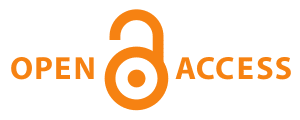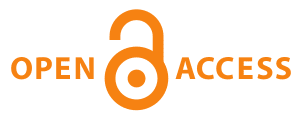
IN THE world of academic publishing, it is hard to get more traditional than Nature.
The British scholarly weekly has been reporting scientific breakthroughs since 1869. It hews to the time-honoured, and time-consuming, peer review, in which papers’ worth is judged by anonymous experts prior to publication. Fewer than one in ten submissions make the cut. Successful ones are printed on dead trees and dispatched by mail to subscribers, who pay for the privilege of reading about the latest important findings. Their authors win kudos just for getting their paper in.
Contrast this with Frontiers. The Swiss publisher has been posting online papers since 2007. Its peer reviewers, whose names are known, accept 80-90% of submissions, rejecting only those which are fatally flawed. Authors of successful manuscripts pay a publication fee, ranging from $750 to $2,600, so that readers can have free access to articles. A paper’s merit is gauged after publication, using assorted internet metrics like the number of downloads.
For all the differences, the fates of Nature and Frontiers have become intertwined. On February 27th Nature Publishing Group (NPG), which owns Nature and 81 other scholarly journals, announced that it has bought a controlling stake in Frontiers for an undisclosed sum. Besides 30 titles in 14 scientific fields the Swiss upstart brings a social-networking platform—a LinkedIn for boffins, if you like—to share not just research, but news, job offers and information about conferences and events. It currently boasts around 80,000 members.
This is not NPG’s first foray into the new-fangled world of “science 2.0”. It launched its first fully open-access journal, where end users pay nothing to read papers, in 2006. Now it has 16. Of the 12,900 scientific papers published by NPG journals in 2012, 2,300 were made available free. Steven Inchcoombe, NPG’s boss, says that his company’s open-access business is turning a profit. NPG’s parent company, Macmillan Publishers, also owns Digital Science, which offers, among other things, web-based alternatives to traditional measures of impact like the citation index.
The latest deal will bolster NPG’s position. In 2012 Frontiers published more than 5,000 papers, making it the fifth-biggest open-access publisher. And the market is growing. This week BioMed Central, part of Springer, number one on the list, launched its 250th periodical, catchily titled the Journal of Venomous Animals and Toxins Including Infectious Diseases. A few days earlier BioMed Central published its 150,000th paper since it was founded in 2000. Outsell, a consultancy, estimates that open-access journals generated $172m in 2012, up 34% from 2011.
This is still a tiny fraction of the $6 billion or so generated by journal subscriptions. But the traditional subscription-based model is falling out of favour. Academics have long complained that publishers abuse their monopoly-like power. Perusing Tetrahedron, say, is a must for any self-respecting chemist. So they (or rather, their university libraries) grudgingly cough up €18,570 ($24,267) for an annual subscription. More than 13,000 scientists are boycotting Elsevier, a big Dutch publisher of thousands of journals, including Tetrahedron, whose 37% margins on $2.1 billion in revenues make it the biggest offender in the eyes of many. (NPG is privately-owned and does not disclose its financial results.) A consortium of particle-physics labs, libraries and funding agencies is negotiating a deal with all 12 of the field’s leading journals to make the 7,000 articles they publish each year free to read.
Governments, too, are pushing for open access to publicly financed research. Otherwise, they argue, citizens would be paying twice, in taxes and in subscription fees, to see its fruits. Last week the White House Office of Science and Technology Policy (OSTP) told federal agencies to come up with plans to make the research they support available for free within 12 months of publication. A week earlier a bill that would require public access to papers after six months began to make its way through Congress. The European Union is moving in the same direction. Britain even wants to force recipients of public research grants to make papers available for free immediately, which means having to pay publication fees. Some big private funders, like the Wellcome Trust in Britain, are taking a similarly tough stance.
The Latest Bing News on:
Open access science
- Open Science and Agroecology: A Conversation with Miguel Ángel Núñezon April 26, 2024 at 9:00 am
An independent researcher argues that Venezuela is undergoing an agroecological transition and explains its importance.
- Access: How a St. Louis Nonprofit Guides Kids from Middle School to Collegeon April 26, 2024 at 4:01 am
Operating out of three Catholic middle schools, Access Academies offers enrichment, counseling, and scholarships to hundreds of disadvantaged kids.
- 'Dueling Dinosaurs:' One-of-a-kind dig, laboratory access at Raleigh science museumon April 26, 2024 at 3:00 am
The name comes from paleontologists' theory that the two dinosaurs fought to the death on that site. "You have a predator and a prey that were buried together entwined in one grave in one ...
- Google Thinks It Can Cash In on Generative AI. Microsoft Already Hason April 25, 2024 at 6:29 pm
While both Alphabet and Microsoft boasted strong quarterly earnings, only one tech giant showed that its generative AI bet is starting to pay off.
- Researchers outline roadmap for digital brain scienceon April 25, 2024 at 10:34 am
Neuroscience has entered a new, digital phase. The combination of brain research with supercomputing in large-scale, multi-disciplinary research collaborations has enabled an innovative approach to ...
- LTE: An Open Letter from 171 Faculty — Do not ban protest at NUon April 24, 2024 at 9:33 pm
Dear President Schill and Provost Hagerty, Northwestern’s University Mission declares its commitment to encourage debate; champion access, diversity and belonging; strengthen our community; and care ...
- Vast DNA tree of life for plants revealed by global science team using 1.8 billion letters of genetic codeon April 24, 2024 at 8:00 am
A new paper published today (April 24) in the journal Nature by an international team of 279 scientists led by the Royal Botanic Gardens, Kew presents the most up-to-date understanding of the ...
- Retractions are part of science, but misconduct isn’t — lessons from a superconductivity labon April 23, 2024 at 5:00 pm
Journals, funders and institutions that employ researchers all want to produce or disseminate rigorous scientific knowledge — and all can learn lessons from misconduct cases.
- Breaking knowledge barriers: The need for open-access in scienceon April 22, 2024 at 11:21 am
The internet serves as a haven of scientific information, representing an era where the knowledge of anything we wish to know is available at our fingertips. Yet in many ways, accurate, firsthand ...
- Empowering Global Climate Efforts: NASA’s Integration of AI and Open Scienceon April 20, 2024 at 6:12 am
To construct an expansive foundation model, we acknowledged the necessity for collaboration beyond a singular entity,” Maskey stated. “Our endeavors surrounding foundation models have been accessible ...
The Latest Google Headlines on:
Open access science
[google_news title=”” keyword=”open access science” num_posts=”10″ blurb_length=”0″ show_thumb=”left”] [/vc_column_text]The Latest Bing News on:
Open access science publishing
- Transforming research librarieson April 27, 2024 at 12:30 am
Dissemination of research through publications in prestigious journals is the essence of scientific discovery and innovation. Cutting-edge technologies in the present age are largely inspired by ...
- Elisabeth Bik, expert in scientific integrity: ‘We need to slow down scientific publishing’on April 26, 2024 at 9:41 am
The Dutch microbiologist has been voluntarily searching for duplicate, erroneous or retouched academic images for more than 10 years and warning universities and scientific journals about it ...
- Are Academic Publishers Ignoring the Theft of Ukrainian Fossils?on April 25, 2024 at 7:17 pm
Russia’s war of aggression against Ukraine has lasted for more than two years and counting. This assault on the sovereignty of Ukraine and its people continues to disrupt every aspect of civilia ...
- Study highlights the impact of lionfish invasion in the Mediterranean Seaon April 25, 2024 at 7:20 am
Researchers from Wageningen University and Research, the Netherlands, have published a comprehensive study on the invasion of lionfish in the Mediterranean Sea, highlighting a rapid spread and the ...
- Decentralized science can be the next big thing for blockchain utilizationon April 25, 2024 at 4:00 am
Blockchain technology promises a new era for scientific publishing, offering transparency, speed and decentralized governance to overcome peer review and publication inefficiencies ...
- Saudi Arabia's King Fahd National Library Introduces 'Open Access' Initiativeon April 24, 2024 at 3:44 am
King Fahd National Library has launched a new initiative, called "Open Access", to mark World Book and Copyright Day. It enables free access to a range of its publications on library and information ...
- International DNA Day launch for Hong Kong’s Moonshot for Biologyon April 23, 2024 at 5:00 pm
A significant portion of modern knowledge in biology has emerged through sequencing the genetic code of the world’s biodiversity, which to date has been largely uncharacterized and increasingly ...
- Retractions are part of science, but misconduct isn’t — lessons from a superconductivity labon April 23, 2024 at 5:00 pm
Journals, funders and institutions that employ researchers all want to produce or disseminate rigorous scientific knowledge — and all can learn lessons from misconduct cases.
- Open Internet, web scraping, and AI: the unbreakable linkon April 23, 2024 at 7:12 am
With existing technological capabilities, open access to publicly available web data is the only way to improve the quality of AI outputs.
- Artificial intelligence to be used for the detection of common eye diseaseon April 23, 2024 at 6:14 am
A systematic approach follows, as well as the marriage of computer science and ... is a professional open access resource for discovery of scientific and technical content published by the Tsinghua ...
The Latest Google Headlines on:
Open access science publishing
[google_news title=”” keyword=”open access science publishing” num_posts=”10″ blurb_length=”0″ show_thumb=”left”]











